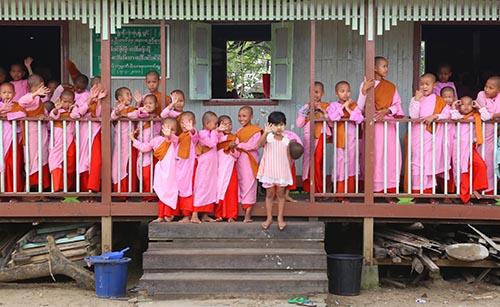Patisankha Yoniso Bhojanam Patisevami
Neva Davaya Na Madaya
Na Mandanaya na Vibhusanaya
Yavadeva Imassa Kayassa Thitiya
Ya Panaya Vihimsuparatiya
Brahmacariya Nuggahaya
Wisely reflecting, I use this food not for fun, not for pleasure, not for fattening, not for beautification, but only for the maintenance and nourishment of this body, for keeping it healthy, for helping with the Spiritual Life;
Thinking thus, I will allay hunger without overeating, so that I may continue to live blamelessly and at ease.
Blessings:~ Let us feel grateful for the food prepared by generous donors and blessings with metta
Abhivadanasilisa
Niccam Vaddhapacayino
Cattaro Dhamma Vaddhanti
Ayu Vanno Sukham Balam
For One who constantly honours and respects elders,
For blessing accrue to him – long life, beauty, happiness and strength
 The nunnery is a safe place in a country where poor girls have very little hope for a safe future. (Andrew Rothschild for Yahoo)
The nunnery is a safe place in a country where poor girls have very little hope for a safe future. (Andrew Rothschild for Yahoo) 





